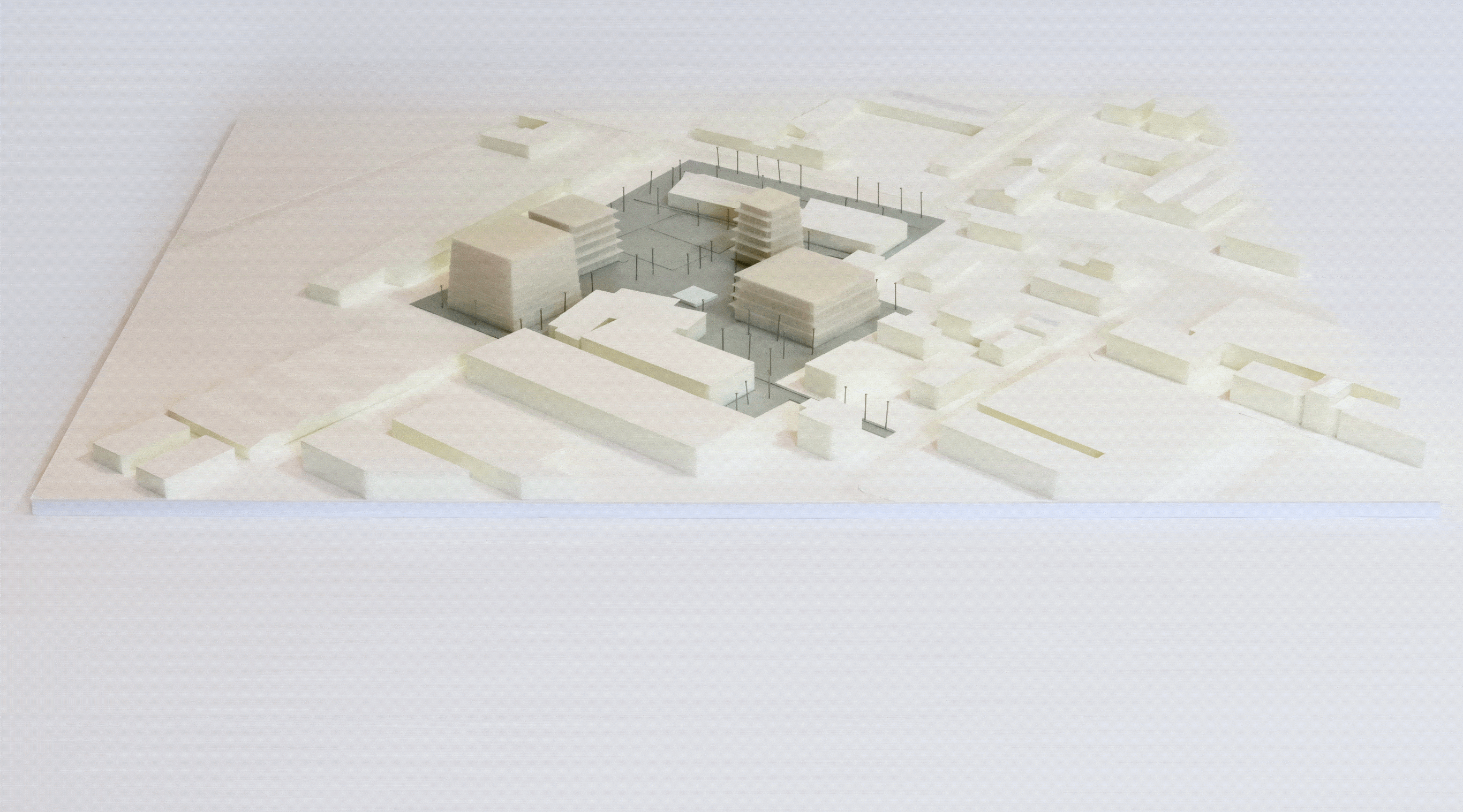
Conceptual design of a Green Campus
| Location | Aachen, Germany |
| Year | 2023 |
| Status | Closed competition |
| Client | Liebig Höfe Aachen GmbH & Co. KG |
| Program | Offices, open spaces witch kitchen facilities, laboratories, workshops, cafeteria |
| Area | 25.000 m2 |
| Team | Jola Starzak, Dawid Strębicki, Katarzyna Krawczyk, Enrico Armentani, Mikołaj Betka, Agnieszka Grzemska |
| In collaboration with |
Architecture: Böll Architekten |
Today, the Liebig-Höfe looks like a largely deserted area. Individual buildings remind of its former use, with the vast area of a car park in between. As it’s typical for a post-industrial site, the surroundings are heterogeneous and appear unplanned.
The aim of our design is therefore to create a green Campus as a recognisable place in this environment. The existing buildings will become the starting point of a complex that will gradually transform the site into a Campus. The chosen scheme does not only work when everything is finished, but from the very beginning. The Campus begins to exist with the first new building (and the design of the open spaces). This is important for a development whose time horizon is not clearly foreseeable.
The new buildings must have character so that they won’t be lost. We propose a stepped pyramid-like form. A small setback of 20, 30 or 50 centimeters per storey is enough to turn a simple cube into an element of character. The new buildings are designed as autonomous blocks which vary in their area and height. We have developed different typologies of those and demonstrated how they function. The proposed buildings frame a central open space that will become the mentioned Campus. It is the central hub of everyday life and all entrances are oriented towards it. The area is easily accessible, but no longer with priority for cars. These will be collected in the new Mobility hub to free up the space for the new development. Where cars used to be parked, campus life can now develop. The Mobility hub has the same architectural form as other new buildings, with lower floor heights. However, the idea of a modular, completely demountable structure is being pursued here.
A mixed typology of different variants is proposed for the office floors. The rooms can be designed flexibly and can also be changed in the future with simple means. The permanently installed areas such as cafeteria, sanitary facilities and installation shafts are located in the central zone of each floor. Informal areas with double-height ceilings can be used for both individual relaxation and group activities. Opposite them is a staircase that connects all the office floors with each other, allowing for more spatial and social connections.
The landscape design aims to emphasise the existing character of the area while preserving the ruderal atmosphere - an extensive maintenance concept will be applied here to support the natural vegetation and keep the character of the site. A central element of the concept is the very heart of the green Campus. It features a large water element that serves as a meeting point and also improves the microclimate through evaporation. Loose seating can invite people to find their favourite spot, various round benches under trees make it possible to enjoy a break in the shade. Other uses such as table tennis or outdoor catering can also be offered here. In addition to the Campus centre, the dense green frame that surrounds the entire area is also a characteristic here. Permeable lean concrete is used for paving. This allows rainwater to seep away naturally and contributes to the ecological sustainability of the project. In addition, trees will be placed outside the green spaces in water-bound path coverings to create a harmonous connection between the different areas of the site. We care to ensure robust and adaptable vegetation while creating a dense atmosphere between light and shade with various plants. The green areas can also serve as water retention zones.






